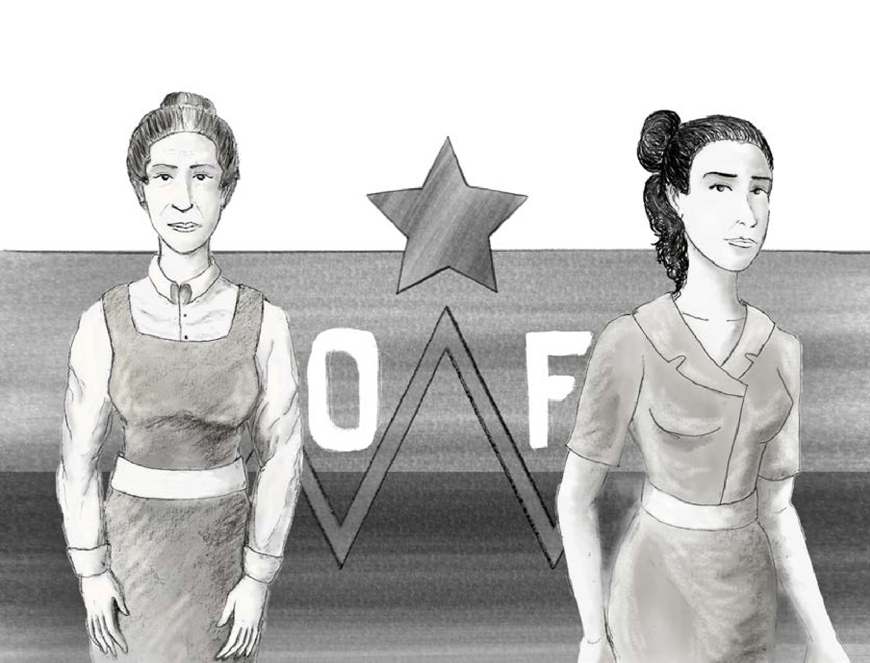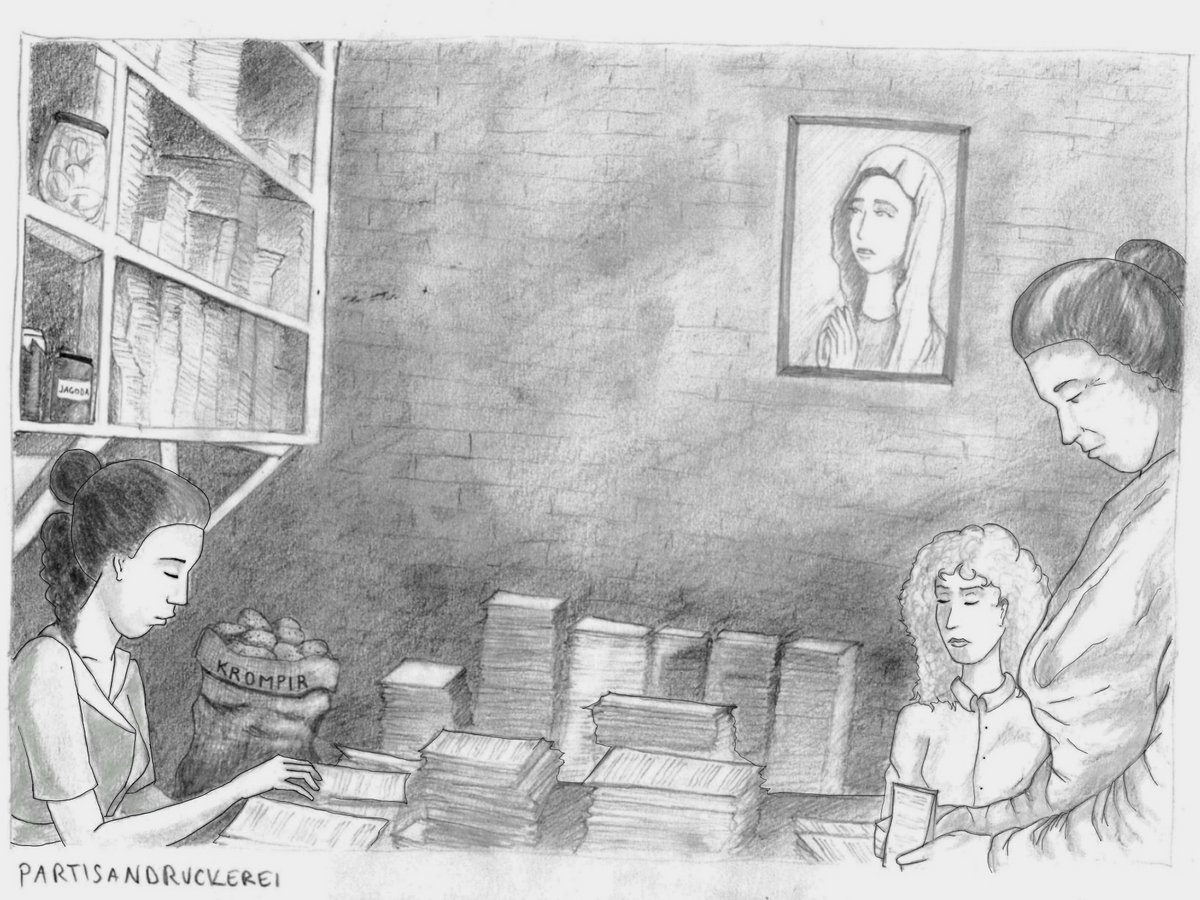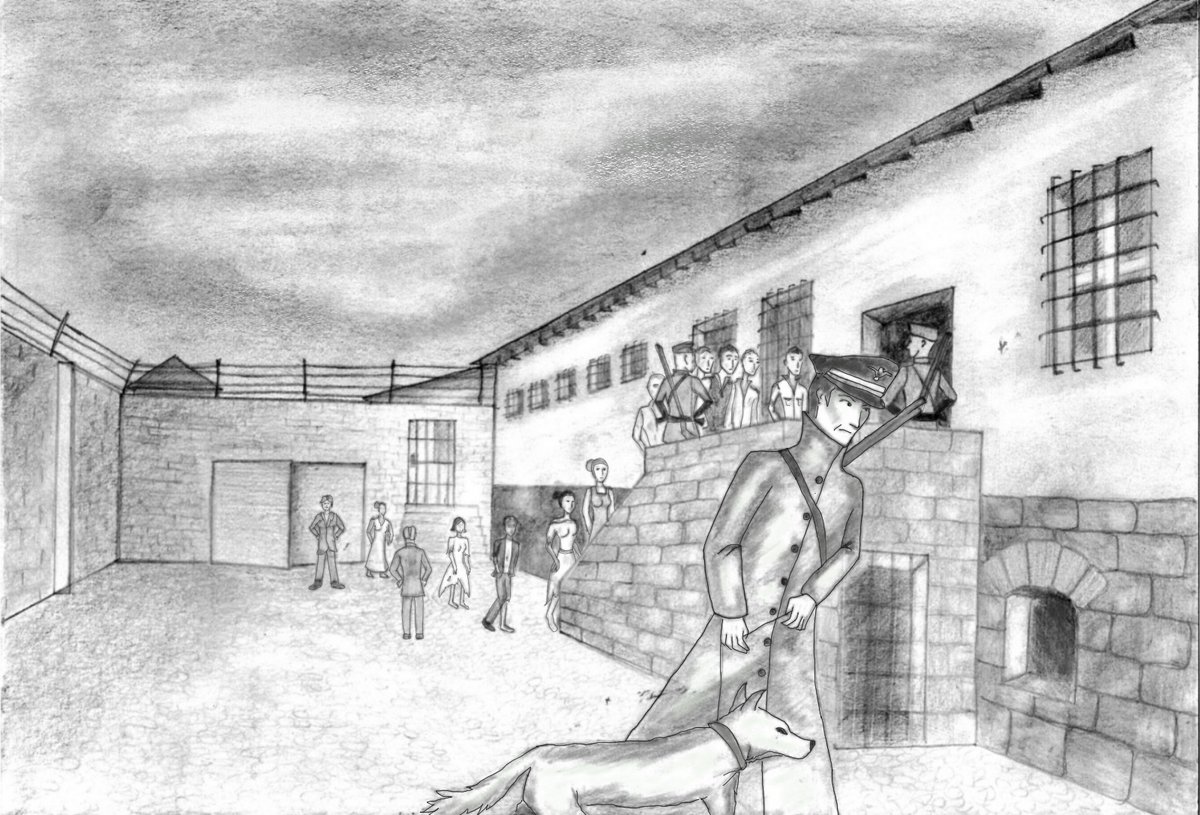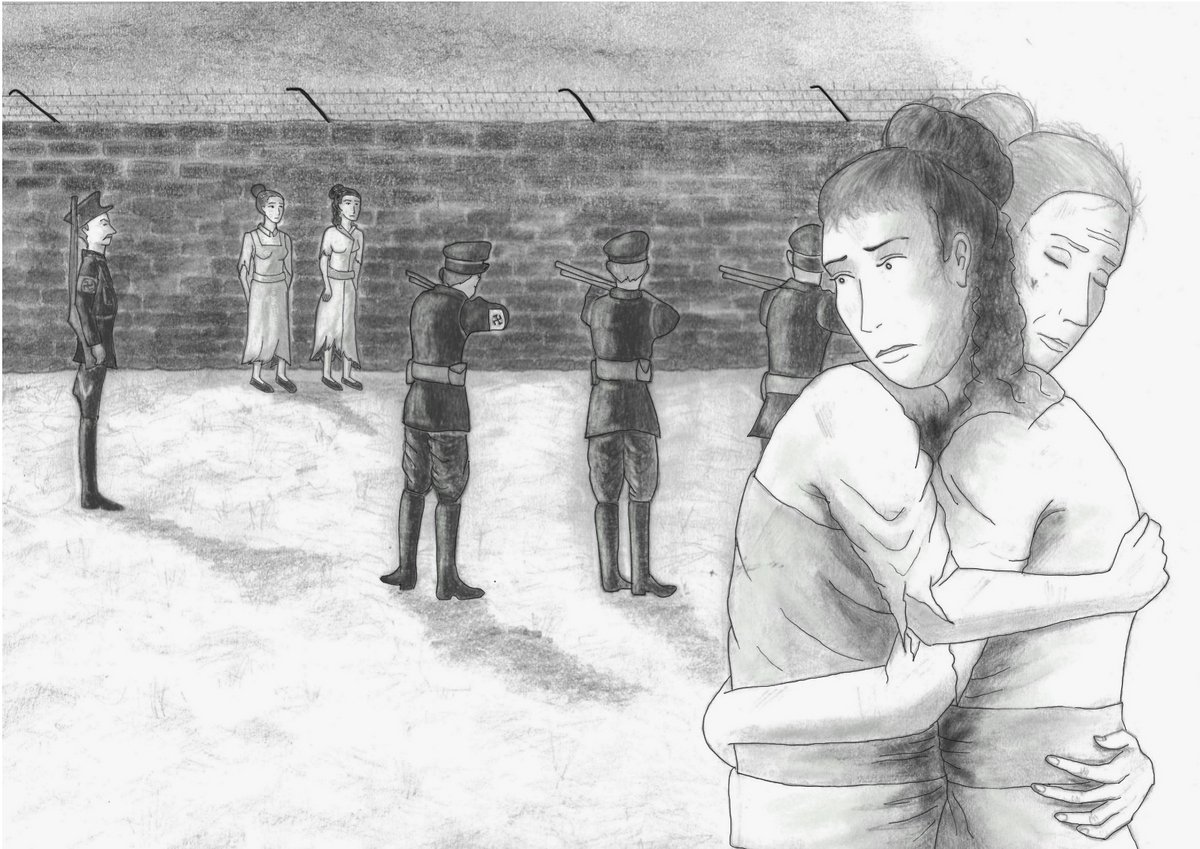In 1938, in a small town in Upper Austria, one of the many Nazi concentration camps was constructed. It was known as the Mauthausen concentration camp. It existed from 1938 to 1945. The camp was run and guarded by the SS. The people who were imprisoned here came from many countries in Europe: Poland, Russia, France, Italy, Germany, Austria and others. They were political opponents, belonged to marginalised groups (e.g. ‘criminals’, ‘asocials’) or were persecuted for anti-Semitic and racist reasons (e.g. Jews). Most of the prisoners were men, but there were also women and children.
In the Mauthausen quarry, the prisoners carried out hard forced labour. In the more than 40 subcamps (Gusen, Steyr, Linz, Ebensee, Vienna...), they were deployed in the arms industry. People lived in overcrowded accommodation. They were not given enough food and clothing, and they starved and died of diseases. SS men beat many prisoners to death, shot them or murdered them in the gas chamber at Mauthausen. In total, almost 200,000 people were imprisoned at Mauthausen and its subcamps. Half of them lost their lives.
The Mauthausen concentration camp was on a hill and could be seen for miles around. Many people were involved with the camp: they worked there, brought deliveries or knew SS men. Almost everyone knew about the death camp. Often, the SS men committed the crimes in full view of the population. On 5 May 1945, the Mauthausen concentration camp was liberated by US troops.
Here, you will read the story of a person who was connected with the Mauthausen concentration camp.
Marija & Marija Hafner
Text: Christian Hanl – Illustration: Alice Cimador

Marija Hafner is born in 1895 in the small town of Naklo, Slovenia. She earns a living writing poems and short texts. She lives with her family in Stražišče near Kranj in present-day Slovenia, close to the Austrian border. Her daughter, also called Marija, is born in 1914. She will later work in a nearby factory.
Slovenia is part of the Austro-Hungarian Monarchy until the end of the First World War. When the Monarchy collapses in 1918, new states emerge, and Slovenia becomes part of the Kingdom of Serbs, Croats and Slovenians, also known as the ‘first Yugoslavia’. From now on this is a southern neighbour-state of the newly established Republic of Austria.
In the Second World War, Nazi Germany, which Austria has been annexed to since 1938, also invades the Yugoslav Kingdom. In April 1941, the German Wehrmacht invades, and the country is split into multiple parts. Everyday life for the Hafner family changes drastically.

The northern Slovenian regions where the Hafner family lives are now incorporated into the German Reich as part of measures to provide ‘Lebensraum’ (‘living space’) for the German ‘Volk’ or ‘people’. The Nazis impose a ‘Germanisation policy’. Slovenian organisations are disbanded, place names are Germanised, Slovenian kindergartens are closed, and German teachers are deployed to Slovenian schools to spread the German language. Slovenian-sounding names are replaced by German-sounding ones, and speaking Slovenian is prohibited. The Slovenian-speaking population in the country is oppressed.
However, a strong resistance movement to the Nazi regime forms. It’s called ‘Osvobodilna Fronta’ (abbreviated to OF and meaning ‘Liberation Front’). It also has members from the Slovenian minority in Carinthia. The members of this resistance movement, the Slovenian Partisans, carry out attacks and raids in order to weaken Nazi rule and obstruct the ‘Germanisation plans’.
Marija and Marija Hafner are part of the resistance movement. From summer 1941 onwards, the Hafners’ house in Stražišče becomes a meeting place for Partisans. Flyers and other propaganda materials are produced at the house. Women play important roles in the resistance. They disseminate information, obtain food and supplies, provide medical aid and even participate in military actions. Marija and Marija Hafner distribute flyers among the population and take care of a regular flow of people seeking refuge in their house.

In 1942, the two women, along with Franc Hafner (1922–1942), the brother of one Marija and son of the other, are denounced and arrested. On 18 February 1942, all three are taken to Begunje, where the Gestapo is using a castle as a prison for Slovenian Partisans. Everyday life for the prisoners is characterised by hunger, torture and punishment.
The Osvobodilna Fronta also carries out attacks on Nazis. The Germans react to this by executing prisoners. For every Nazi who is assassinated, ten Slovenian hostages have to die. When five Germans are killed in mid-April 1942 by Partisans, the Gestapo orders the shooting of 50 people – among them the two Marijas and Franc.
On 19 April 1942, they are taken from the prison in Begunje to the Mauthausen concentration camp along with the other condemned people. There they are probably taken to the ‘Bunker’, the camp prison. In these cells, the prisoners must wait for their execution.

One day after their arrival, on 20 April, which happens to be Hitler’s birthday, Marija and her daughter Marija are shot and killed at 11 o’clock in the morning on the execution ground outside the camp walls.
Franc is also shot on 20 April 1942. The bodies are probably incinerated in the concentration camp’s crematorium and the ashes scattered on the campgrounds. Like most of the people murdered in the camp, they have no proper grave.
Along with two other Slovenian women, Marija and Marija Hafner are the first women to be brought into the Mauthausen concentration camp. By the time the camp is liberated in May 1945, another 8,500 women will follow them. Many are transported onwards to other camps after a short period, while hundreds of others are forced to work in Mauthausen’s subcamps.
Between 1938 and 1945, around 4,150 Slovenian men and women are deported to Mauthausen its subcamps. Most of them, like Marija and Marija Hafner, are categorised as ‘political prisoners’. This means they’re people who fought against Nazi rule in their home countries. Many pay with their lives for this – like Marija, Marija and Franc Hafner, who fought for a free Yugoslavia.
Today at the Mauthausen Memorial, they are remembered by the entries in the ‘Room of Names’ and the memorial plaques, as well as the Yugoslavian and Slovenian monuments to the fallen members of the resistance movement. On the ‘Wailing Wall’, there is a memorial plaque to the victims from the Slovenian-speaking community in Austria, the Carinthian Slovenes.

- 1895 Marija Hafner is born in Naklo
- 1914 Her daughter Marija is born
- 28 July, start of the First World War
- 1918 11 November, end of the First World War
- 1933 30 January, Adolf Hitler becomes Reich Chancellor in Germany
- 1938 12 March, ‘Anschluss’ (‘Annexation’) of Austria to Nazi Germany
- 8 August, construction starts on the Mauthausen concentration camp
- 1939 1 September, start of the Second World War
- 1941 April, the German Wehrmacht invades Yugoslavia
- Incorporation of northern Slovenia into the German Reich, ‘Germanisation policy’
- Founding of the resistance movement Osvobodilna Fronta
- The Hafner family participates in the resistance to the Nazi regime
- 1942 Marija, Marija and Franc Hafner are arrested and taken to the prison in
- The Hafners are transported to Mauthausen
- Marija, Marija and Franc Hafner are executed
Further reflection in groups...
Marija and Marija Hafner are members of the resistance movement Osvobodilna Fronta. Find reasons in the text why the two women choose to get involved in the Slovenian resistance.
Marija and Marija Hafner are arrested because of their work in the Slovenian resistance. Think about what might give you courage if you were in this situation.
In a drawing, you can see the two women’s arrival at the Mauthausen concentration camp. What do you think might have been their first impression of this place?
On your visit to the Mauthausen Memorial, you’ll see monuments to people who were imprisoned and murdered in the concentration camp. In the Memorial, look for the monuments and memorial plaques mentioned in the text.